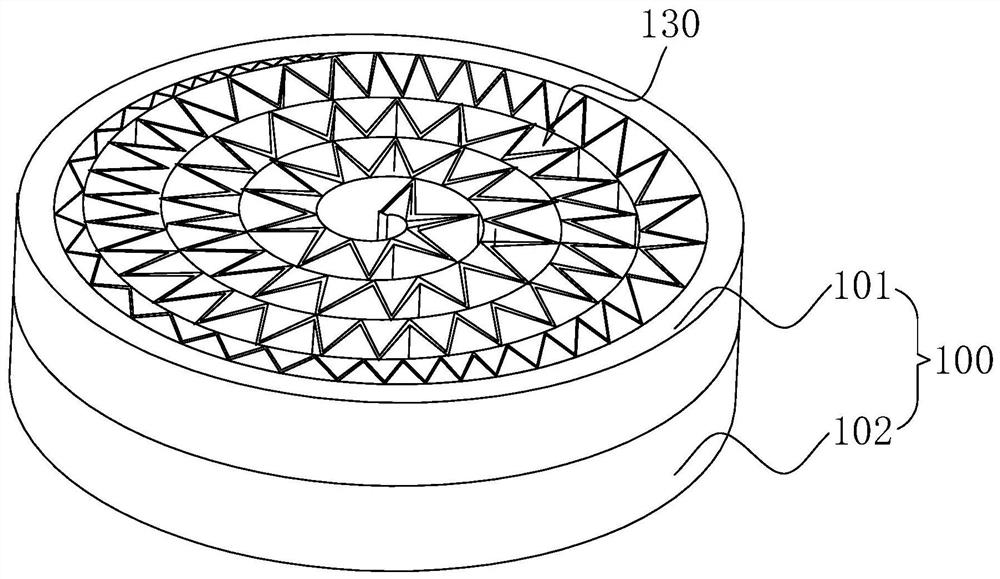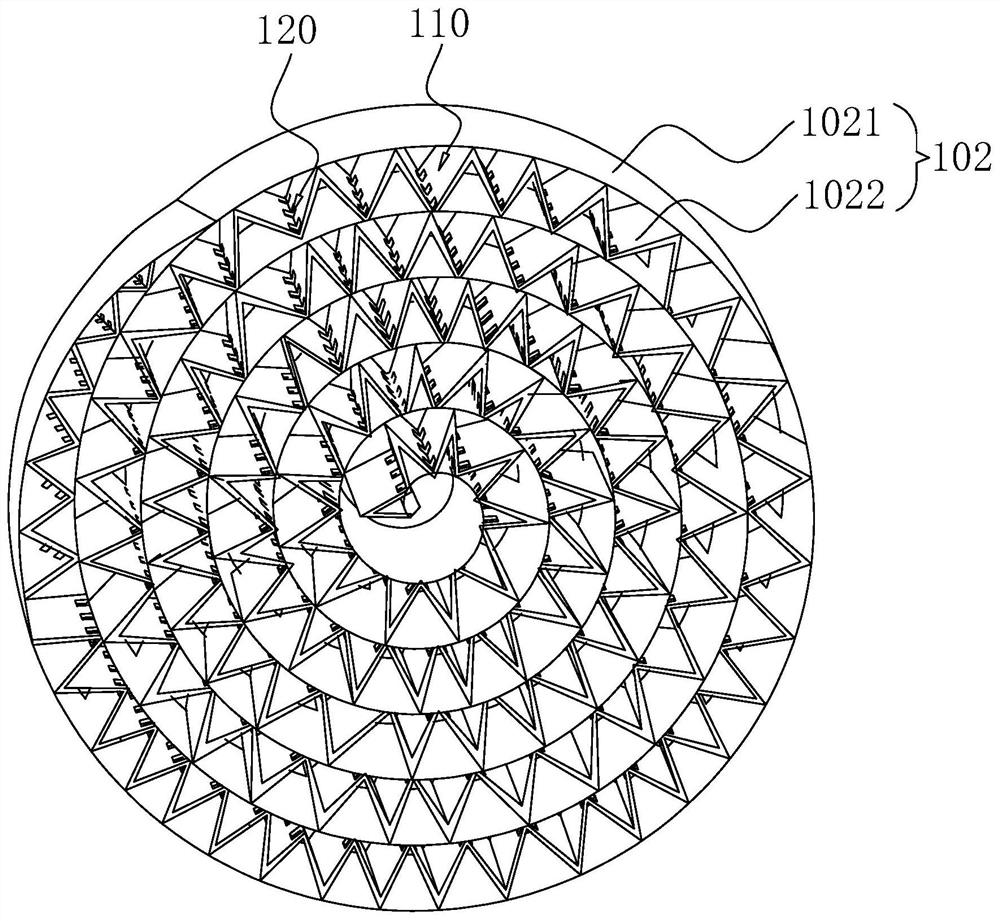Catalytic coating and double-layer microporous catalytic burner applying catalytic coating
A catalytic coating, double-layer technology, applied in the field of double-layer microporous catalytic burners, can solve the problem that the catalytic effect of the catalyst needs to be optimized, so as to improve the thermal stability and anti-sintering performance, improve the catalytic activity, and increase the combustion reaction. effect of time
- Summary
- Abstract
- Description
- Claims
- Application Information
AI Technical Summary
Problems solved by technology
Method used
Image
Examples
preparation example 1
[0065] A kind of adhesive, is made from the raw material of following mass number: SB powder 40g; Ce(NO 3 ) 3 ·6H 2 O8g; LaNO 3 ·H 2 O8g; HNO 3 20g; isobutyric acid 6g; deionized water 60g.
[0066] A preparation process of adhesive specifically comprises the following process steps:
[0067] According to the mass number, deionized water, LaNO 3 ·H 2 O and Ce(NO 3 ) 3 ·6H 2 Add O to SB powder to obtain mixture A, then stir mixture A, control the speed at 300r / min, add HNO to mixture A according to the mass ratio 3 and isobutyric acid, and then heated the mixture A at a constant temperature, controlled the system temperature to 75° C., and controlled the reaction time to 3 hours to obtain an adhesive.
preparation example 2-5
[0069] The differences between the mass numbers and process parameters of the raw materials in the adhesive of Preparation Example 2-5 and Preparation Example 1 are listed in Table 2, and the rest are the same as Preparation Example 1.
[0070] The mass number and process parameter of raw material in table 2 preparation example 2-5 adhesive
[0071]
[0072]
preparation example 6
[0074] An active ingredient made from the following molar quantities of raw material: Co(NO 3 ) 2 ·6H 2 O 0.2mol; Mg(NO 3 ) 2 0.8mol; (NH 2 ) 2 CO 5mol.
[0075] A kind of preparation technology of active component specifically comprises the following processing steps:
[0076] Co(NO 3 ) 2 ·6H 2 O, Mg(NO 3 ) 2 and (NH 2 ) 2 CO was mixed and stirred to obtain a mixture C, and then the mixture C was ground at room temperature, and the ground mixture C was subjected to a combustion reaction at a system temperature of 800°C, and the reaction time was controlled to be 30 minutes to obtain the product D. The active component can be obtained by naturally cooling the product D.
PUM
 Login to View More
Login to View More Abstract
Description
Claims
Application Information
 Login to View More
Login to View More - R&D
- Intellectual Property
- Life Sciences
- Materials
- Tech Scout
- Unparalleled Data Quality
- Higher Quality Content
- 60% Fewer Hallucinations
Browse by: Latest US Patents, China's latest patents, Technical Efficacy Thesaurus, Application Domain, Technology Topic, Popular Technical Reports.
© 2025 PatSnap. All rights reserved.Legal|Privacy policy|Modern Slavery Act Transparency Statement|Sitemap|About US| Contact US: help@patsnap.com



